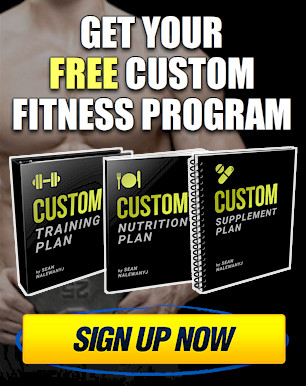HUNGRY WHILE CUTTING? 12 WAYS TO REDUCE HUNGER ON A DIET
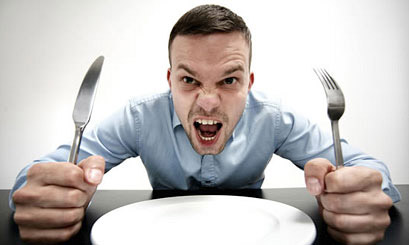
If you’re feeling hungry while cutting, trust me, you’re not alone.
Regardless of what type of dieting method you employ or how your training plan is specifically structured, fat loss ultimately comes down to one central thing: maintaining a net calorie deficit over time by consistently burning more calories than you consume.
This is known as “The Law Of Energy Balance” and it is the absolute foundational principle behind any proper fat burning program. By consistently taking in fewer calories than your body requires each day to function, you force your body to tap into its excess fat stores in order to obtain a source of energy.
It’s a basic concept on paper, but much easier said than done.
Why? Simple…
When your daily caloric expenditure exceeds your caloric intake, your body will naturally kick into survival mode and produce feelings of hunger to motivate you to eat. This response is automatic and hard-wired. It’s uncomfortable, and there’s really no way around it.
For some people, feeling hungry while cutting is more intense and difficult to deal with, while for others it’s less intense and not as big of an issue.
In any case, two things are for certain…
#1 – If you place your body into a calorie deficit, you will feel hungry to some degree.
#2 – Food cravings are the number one reason why most people ultimately fall off track with their fat loss diet and end up failing in the long run.
With that in mind, I want to share 12 effective tips with you below that you can employ to minimize the degree you feel hungry while cutting, and in turn maximize your chances of long term fat loss success.
These tips are not going to completely eliminate your hunger levels, but they can make a very significant difference in reducing them down to a more manageable level.
So, if you feel significantly hungry while cutting, give these methods a try…
12 Tips To Control Hunger While Dieting
#1 – Maintain A Small Calorie Deficit And Focus On Losing Fat At A Gradual Pace.
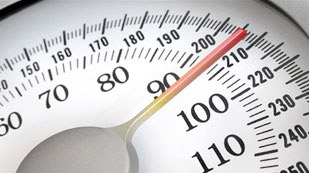
This is the most basic and obvious tip to employ, but also the most important.
Create too large of a calorie deficit and not only will you lose an excessive amount of lean muscle mass throughout your cut, but you’ll also feel excessively hungry as well.
Always think of fat loss as a marathon rather than a sprint. Focus on creating a small calorie deficit that gradually strips the fat away while allowing you to maintain your lean mass and keep your hunger levels relatively controlled.
A good guideline for this is to employ a calorie deficit of around 15-20% below your calorie maintenance level, and aim to lose about 1-2 total pounds of fat per week. If you want a quick and easy way to calculate this for yourself, make sure to check out my free macronutrient calculator.
#2 – Make Sure You’re Getting Enough Protein.
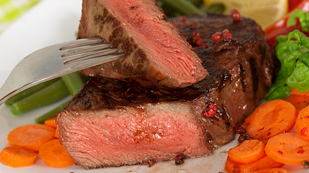
Protein is the most filling of the 3 macronutrients and also plays an important role in helping you spare lean muscle tissue as you diet down.
Aim for around 1 gram of protein per pound of body weight daily from high quality protein sources such as lean poultry, lean red meat, eggs, lean pork, fish/seafood, whey protein, and low fat dairy products.
#3 – Don’t Let Your Dietary Fat Intake Drop Too Low.
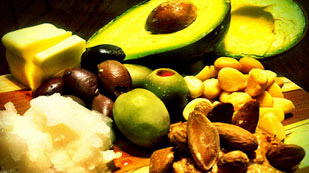
The idea that “dietary fat makes you fat” is one of the biggest myths when it comes to proper fat loss nutrition, and maintaining adequate fat intake is a very important aspect of your overall plan.
Not only does a sufficient amount of dietary fat help to keep testosterone levels from dipping too low throughout your cut, but it also leaves you feeling fuller and more satisfied in between meals by slowing down the rate of gastric emptying.
For those reasons, I’d recommend that you get at least 20% of your total daily calories from fat. Fats contain 9 calories per gram, so if your daily calorie intake was 2200, you’d aim for about 50 grams of fat per day.
#4 – Ensure That You’re Eating Plenty Of Fiber.
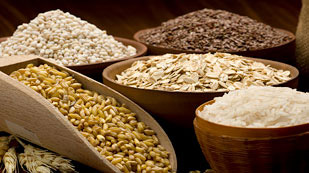
Fiber absorbs water as it moves through your digestive tract and essentially “gels” and expands in your stomach to increase feelings of fullness and satiety. Just like fat, fiber also slows down the rate of gastric emptying.
You can increase your fiber intake by consuming fibrous vegetables and fruits, as well as other high fiber food sources such as oatmeal, potatoes, whole grains, barley, nuts, and seeds.
A good guideline to shoot for is about 15 grams of fiber for every 1000 calories you consume.
#5 – Eat More Vegetables.

This somewhat overlaps with the previous point, but vegetables are one of the very best food sources for a fat loss diet because they’re very high in overall volume but extremely low in calories.
Consuming vegetables with several of your meals throughout the day is a great way to help fill yourself up while keeping the total calorie content of your meals down.
For example, 3 cups of shredded lettuce only contains about 25 calories, 2 cups of sliced mushrooms is around 30 calories, and 2 cups of cauliflower lands at around 60 calories.
Not only are vegetables a great tool for reducing hunger, but they’re incredibly micronutrient dense as well.
#6 – Optimize Your Daily Meal Frequency And Layout.
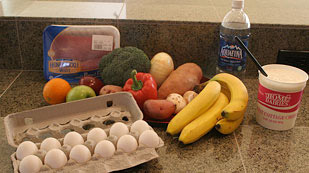
The research on meal frequency and its effects on basal metabolic rate are fairly clear: as long as you’re consuming the same overall calorie and macronutrient totals for the day as a whole, the specific way in which you lay those meals out doesn’t have any significant effect on your bottom line fat loss.
For that reason, you’ll want to experiment with different meal plan structures in order to find the one that works best for you in terms of controlling appetite and food cravings.
For some people that might mean 6 small meals, for others it might mean 4 medium sized meals, and for others it might mean 3 larger meals.
In addition, some people do best by consuming a larger percentage of their calories earlier on in the day with fewer calories consumed later on, and some do better using the exact opposite approach.
Finally, you can also consider trying out the popular “intermittent fasting” protocol by consuming all of your daily calories within an 8 hour “feeding window”, and then fasting for the remaining 16 hours of the day.
Play around with these different variables and see what works best for you.
#7 – Increase Your Water Intake.
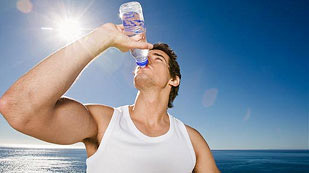
Aside from drinking plenty of water throughout the day as a whole, you can also try consuming a couple glasses of water with each meal in order to increase overall satiety.
#8 – Find The Right Balance Between Dieting And Cardio.
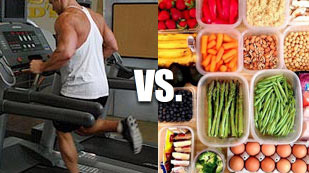
As I mentioned at the beginning of this article, fat loss ultimately comes down to maintaining a net calorie deficit over time by burning more calories than you consume. You can create a calorie deficit by consuming less food, by increasing your activity level, or through a combination of both.
Both of these variables (reducing calorie intake or increasing calorie expenditure) will obviously stimulate your appetite, but everyone reacts a bit differently to each one. Some people are able to manage hunger more effectively by creating a larger calorie deficit through their diet and performing less cardio, while others prefer to consume more calories from their diet but to perform a higher amount of cardio in order to create the same total deficit.
Try playing around with each of these variables by either consuming fewer calories and exercising a bit less or by consuming more calories and exercising a bit more to see which one you prefer.
#9 – Perform Some HIIT Cardio.

Performing low intensity, longer duration aerobic cardio is fine as part of your overall training plan, but keep in mind that these types of sessions tend to have a more powerful appetite-stimulating effect than their high intensity, low duration counterpart.
For that reason, try mixing some high intensity interval cardio into your plan in order to burn additional calories without experiencing a significant increase in appetite.
#10 – Allow For Some Dietary Flexibility.
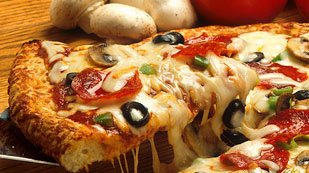
Trying to “eat clean” 24 hours a day by consuming nothing but boiled chicken breast, brown rice and broccoli is not only completely unnecessary when it comes to maximizing fat loss, but it’s also a great way to ensure that you fail with your diet over the long haul.
Completely restricting a particular food item will only make you desire it more, increasing the chances that you’ll eventually “give in”, become discouraged, potentially binge even further, and ultimately throw your entire program off course.
On the other hand, if you simply allot a small percentage of your total calories to come from the foods you crave most right from the outset, your chances of long term success will be hugely maximized, and with no negative effect on your overall results.
Remember, proper fat loss nutrition is all about the big picture, and including a few “cheat foods” here and there is NOT going to magically cause you to gain fat as long as it’s being properly tracked.
My suggestion is to follow the basic rule that if 80-90% of your total calories are coming from lean proteins, minimally refined carbs and healthy fats, then the other 10-20% can come from whatever foods you’d like as long they fit into your overall daily calorie and macronutrient totals.
#11 – Make Sure To Get Enough Sleep Each Night.

Not only does chronic sleep deprivation negatively impact your mental focus, physical strength, energy levels and motivation, but it also boosts your appetite as well. This is due to a decrease in leptin levels and an increase in ghrelin levels, which are two key hormones that regulate hunger.
Everyone’s individual need for sleep varies, so I won’t give you the standard “8 hours a night” guideline. Instead, just aim to get enough quality sleep each night so that you feel fully rested, alert and energized throughout the day.
#12– Slow Down When You Eat.
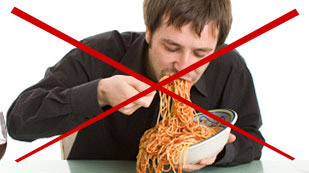
This is a pretty simple one, but research has shown that eating your meals at a slower place helps you to feel fuller and more satisfied off of a smaller volume of food. Your food isn’t going to run away, so take your time and enjoy it.
Hungry While Cutting? Quick Review
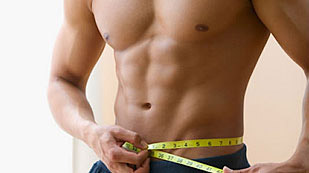
So, here’s a quick recap of the 12 tips we covered…
1) Maintain a small calorie deficit of about 15-20% below your maintenance level and focus on losing fat at a slow, gradual pace.
2) Consume around 1 gram of protein per pound of body weight daily.
3) Don’t allow your fat intake to dip below 20% of your total calories.
4) Consume at least 15 grams of fiber for every 1000 calories that you eat.
5) Eat plenty of vegetables throughout the day.
6) Find the overall meal frequency and layout that works best for you.
7) Drink plenty of water with meals and in between meals.
8) Find the right balance between dieting and cardio that keeps your individual appetite minimized.
9) Perform a couple of high intensity interval cardio sessions throughout the week.
10) Allow for 10-20% of your total calories to come from the “cheat foods” of your choice.
11) Ensure that you’re getting enough high quality sleep each night.
12) Eat your meals at a slower pace.
Although these tips won’t completely eliminate your food cravings, employ some or all of them and you should notice a significant positive effect that will make your diet much easier to stick to over the long term.
If you found this article helpful, make sure to sign up for your FREE custom fitness plan below...




